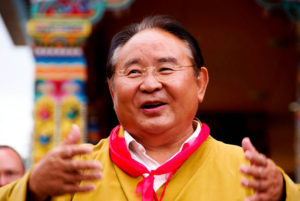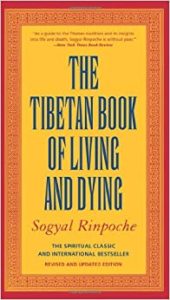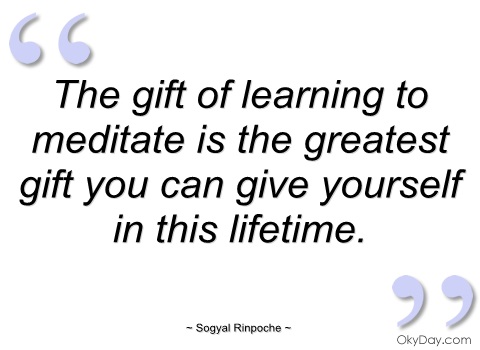Here’s an excerpt from The “Tibetan Book of Living and Dying,” the international bestseller by Buddhist master, Sogyal Rinpoche in which he describes realizing the nature of Consciousness: the holy grail of Patanjali’s classical yoga. Christians and Jews refer to it as “being reborn”; yogis refer to it as becoming “enlightened”; Sogyal refers to it as a “resurrection”. I’ve changed none of Sogyal’s words, except to clarify in three places that what some Buddhists refer to as “nature of mind,” yogis refer to as “consciousness”. – Allan

THE CHANGELESS
Impermanence has already revealed to us many truths, but it has a final treasure still in its keeping, one that lies largely hidden from us, unsuspected and unrecognized, yet most intimately our own.
The Western poet Rainer Maria Rilke has said that our deepest fears are like dragons guarding our deepest treasure. The fear that impermanence awakens in us, that nothing is real and nothing lasts, is, we come to discover, our greatest friend because it drives us to ask: If everything dies and changes, then what is really true? Is there something behind the appearances, something boundless and infinitely spacious, something in which the dance of change and impermanence takes place? Is there something in fact we can depend on, that does survive what we call death?
Allowing these questions to occupy us urgently, and reflecting on them, we slowly find ourselves making a profound shift in the way we view everything. With continued contemplation and practice in letting go, we come to uncover in ourselves “something” we cannot name or describe or conceptualize, “something” that we begin to realize lies behind all the changes and deaths of the world. The narrow desires and distractions to which our obsessive grasping onto permanence has condemned us begin to dissolve and fall away.
As this happens we catch repeated and glowing glimpses of the vast implications behind the truth of impermanence. It is as if all our lives we have been flying in an airplane through dark clouds and turbulence, when suddenly the plane soars above these into the clear, boundless sky. Inspired and exhilarated by this emergence into a new dimension of freedom, we come to uncover a depth of peace, joy, and confidence in ourselves that fills us with wonder, and breeds in us gradually a certainty that there is in us “something” that nothing destroys, that nothing alters, and that cannot die. Milarepa* wrote:
In horror of death, I took to the mountains –
Again and again I meditated on the uncertainty of the hour of death,
Capturing the fortress of the deathless unending nature of mind [aka “consciousness”].
Now all fear of death is over and done.
Gradually, then, we become aware in ourselves of the calm and sky-like presence of what Milarepa calls the deathless and unending nature of mind [aka “consciousness”]. And as this new awareness begins to become vivid and almost unbroken, there occurs what the Upanishads call “a turning about in the seat of consciousness,” a personal, utterly non-conceptual revelation of what we are, why we are here, and how we should act, which amounts in the end to nothing less than a new life, a new birth, almost, you could say, a resurrection.
What a beautiful and what a healing mystery it is that from contemplating, continually and fearlessly, the truth of change and impermanence, we come slowly to find ourselves face to face, in gratitude and joy, with the truth of the changeless, with the truth of the deathless, unending nature of mind [aka “consciousness”]!
– The Tibetan Book of Living and Dying, Sogyal Rinpoche

* one of the most widely known Tibetan Saints




